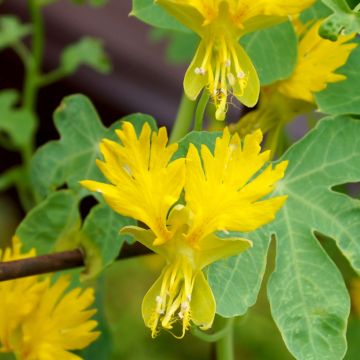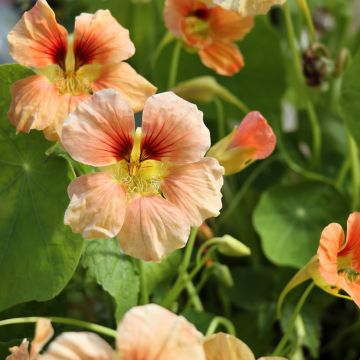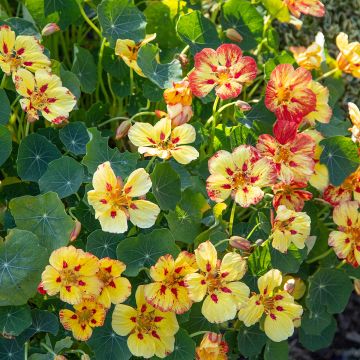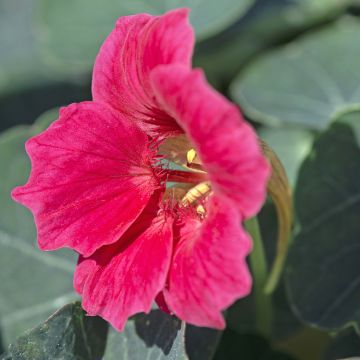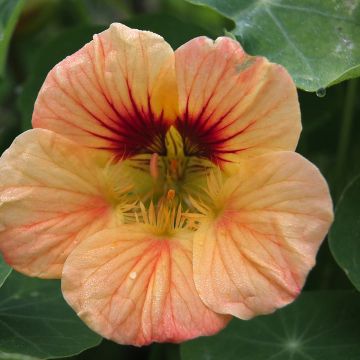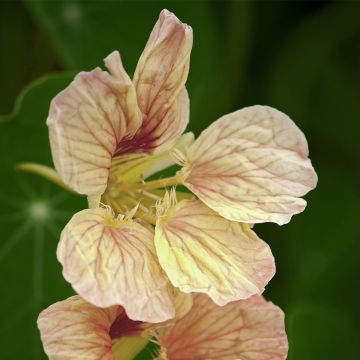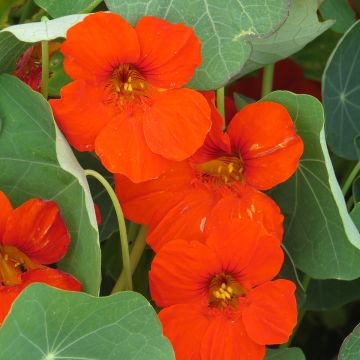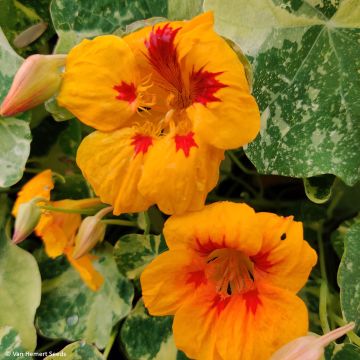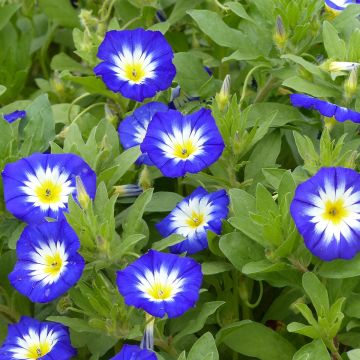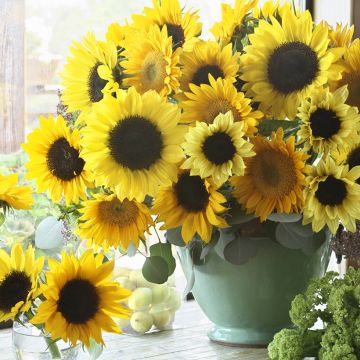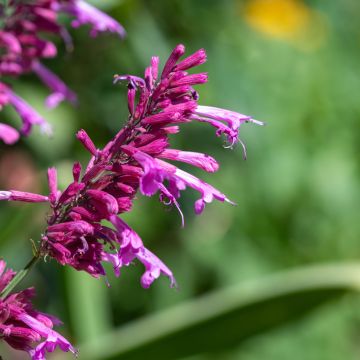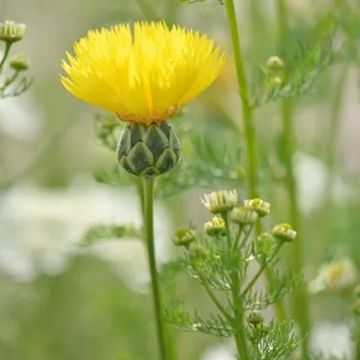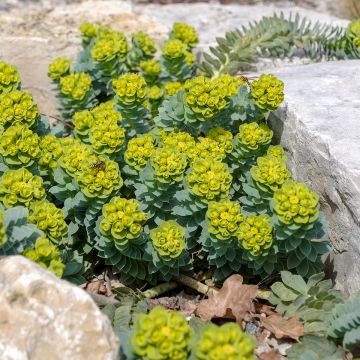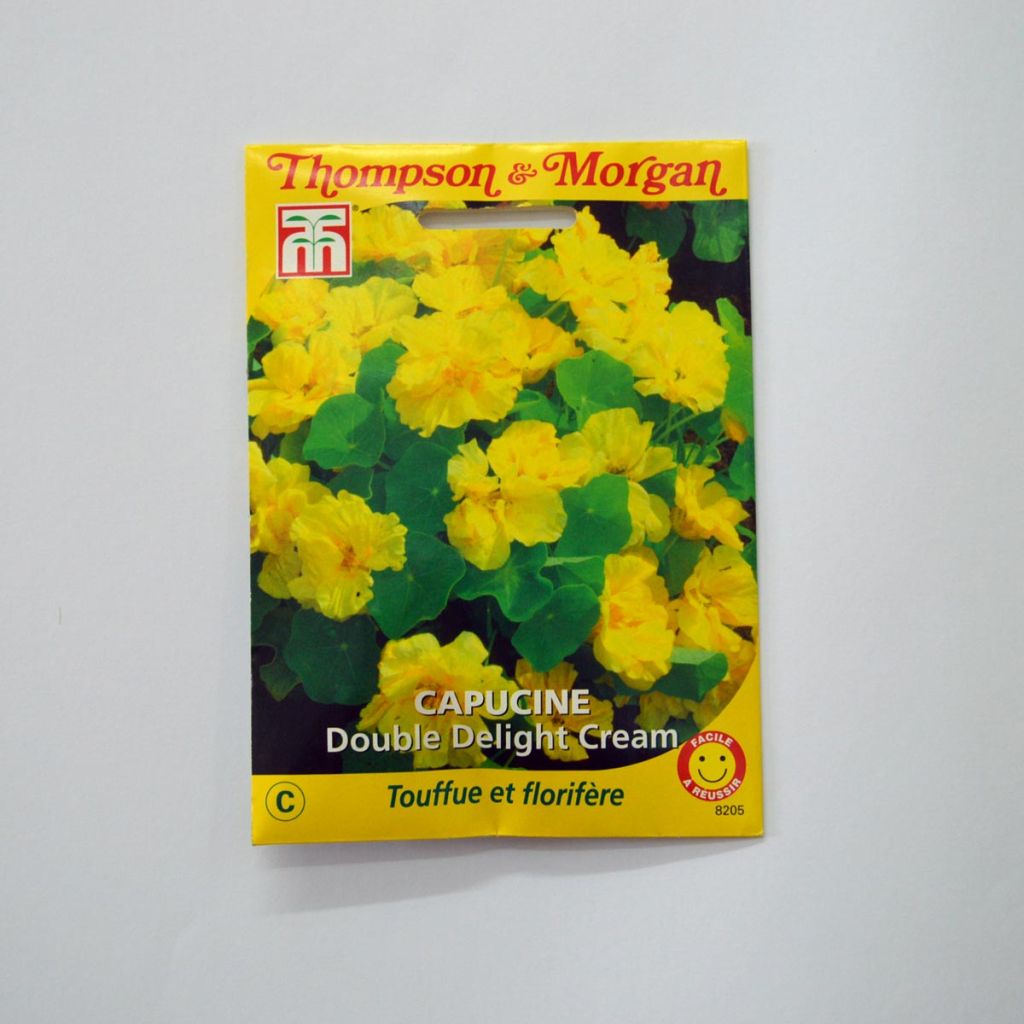

Graines de Capucine Double Delight Cream - Tropaeolum majus
Tropaeolum Double Delight Cream - Dwarf Nasturtium Seeds
Tropaeolum majus Double Delight Cream
Garden Nasturtium, Dwarf Nasturtium
This plant carries a 6 months recovery warranty
More information
We guarantee the quality of our plants for a full growing cycle, and will replace at our expense any plant that fails to recover under normal climatic and planting conditions.
Seed-only orders are dispatched by sealed envelope. The delivery charge for seed-only orders is €3.90.
Does this plant fit my garden?
Set up your Plantfit profile →
Description
The Double Delight Cream Nasturtium, also known as Tropaeolum majus, is a vigorous annual that quickly forms a wide carpet. Its edible flowers are double to semi-double and have a very bright colour, a cream white tinged with lime green that contrasts well with the medium green of its abundant foliage.
It is a very floriferous nasturtium. It will thrive both in the garden where it will spread like a groundcover, and on your balcony, in a pot or hanging basket. Very easy to grow, you can combine it with other varieties of Nasturtiums or with annuals like Lemonade Sweet Peas.
Originally from South America, the Nasturtium offers beautiful flowers in vibrant colours, ranging from yellow to red, and beautiful round leaves that are always fresh.
Nasturtium has everything to please: it is easy to sow, grows quickly, blooms from June to the first frost, spreads widely to cover the ground, creates a flowery border or takes over your trellises. It also grows very well in pots on balconies and patios.
All parts of the plant are edible: the leaves and flowers in salads, as well as the seeds, pickled in vinegar like capers. It does attract aphids, which are fond of it. However, do not deprive yourself of this beautiful plant: in the vegetable garden and orchard, it is an advantage as it diverts pests (while providing valuable food for ladybird larvae) and thus protects your crops.
Report an error about the product description
Flowering
Foliage
Plant habit
Botanical data
Tropaeolum
majus
Double Delight Cream
Tropaeolaceae
Garden Nasturtium, Dwarf Nasturtium
Cultivar or hybrid
Other Nasturtium seeds
Planting and care
Sow Nasturtiums directly outdoors, in their final location, from March to May. Choose a sunny spot with well-drained soil that has been properly prepared beforehand. Sow the nasturtium seeds at a depth of 2cm (1in) in rows spaced 30cm (12in) apart, covering the seeds with an equal thickness of soil. Water the soil regularly, especially during dry periods. Germination usually takes 7 to 12 days.
When the young plants are large enough to handle, thin them to leave one plant every 30cm (12in). You can also sow Nasturtiums indoors at a temperature of 15-25°C (59-77°F). Once the nasturtium plants are big enough to handle, transplant them and grow them in cooler conditions until they reach a sufficient size to be planted outdoors. This operation should be done after all risk of frost has passed.
Nasturtiums prefer a fresh, well-drained soil in full sun or partial shade. They are often attacked by aphids and cabbage white butterflies. Spraying a solution made of traditional black soap and water (4 to 5 cc / 1 liter of water) will help limit the damage in case of a massive aphid infestation.
Sowing period
Intended location
This item has not been reviewed yet - be the first to leave a review about it.
Flower seeds
Haven't found what you were looking for?
Hardiness is the lowest winter temperature a plant can endure without suffering serious damage or even dying. However, hardiness is affected by location (a sheltered area, such as a patio), protection (winter cover) and soil type (hardiness is improved by well-drained soil).

Photo Sharing Terms & Conditions
In order to encourage gardeners to interact and share their experiences, Promesse de fleurs offers various media enabling content to be uploaded onto its Site - in particular via the ‘Photo sharing’ module.
The User agrees to refrain from:
- Posting any content that is illegal, prejudicial, insulting, racist, inciteful to hatred, revisionist, contrary to public decency, that infringes on privacy or on the privacy rights of third parties, in particular the publicity rights of persons and goods, intellectual property rights, or the right to privacy.
- Submitting content on behalf of a third party;
- Impersonate the identity of a third party and/or publish any personal information about a third party;
In general, the User undertakes to refrain from any unethical behaviour.
All Content (in particular text, comments, files, images, photos, videos, creative works, etc.), which may be subject to property or intellectual property rights, image or other private rights, shall remain the property of the User, subject to the limited rights granted by the terms of the licence granted by Promesse de fleurs as stated below. Users are at liberty to publish or not to publish such Content on the Site, notably via the ‘Photo Sharing’ facility, and accept that this Content shall be made public and freely accessible, notably on the Internet.
Users further acknowledge, undertake to have ,and guarantee that they hold all necessary rights and permissions to publish such material on the Site, in particular with regard to the legislation in force pertaining to any privacy, property, intellectual property, image, or contractual rights, or rights of any other nature. By publishing such Content on the Site, Users acknowledge accepting full liability as publishers of the Content within the meaning of the law, and grant Promesse de fleurs, free of charge, an inclusive, worldwide licence for the said Content for the entire duration of its publication, including all reproduction, representation, up/downloading, displaying, performing, transmission, and storage rights.
Users also grant permission for their name to be linked to the Content and accept that this link may not always be made available.
By engaging in posting material, Users consent to their Content becoming automatically accessible on the Internet, in particular on other sites and/or blogs and/or web pages of the Promesse de fleurs site, including in particular social pages and the Promesse de fleurs catalogue.
Users may secure the removal of entrusted content free of charge by issuing a simple request via our contact form.
The flowering period indicated on our website applies to countries and regions located in USDA zone 8 (France, the United Kingdom, Ireland, the Netherlands, etc.)
It will vary according to where you live:
- In zones 9 to 10 (Italy, Spain, Greece, etc.), flowering will occur about 2 to 4 weeks earlier.
- In zones 6 to 7 (Germany, Poland, Slovenia, and lower mountainous regions), flowering will be delayed by 2 to 3 weeks.
- In zone 5 (Central Europe, Scandinavia), blooming will be delayed by 3 to 5 weeks.
In temperate climates, pruning of spring-flowering shrubs (forsythia, spireas, etc.) should be done just after flowering.
Pruning of summer-flowering shrubs (Indian Lilac, Perovskia, etc.) can be done in winter or spring.
In cold regions as well as with frost-sensitive plants, avoid pruning too early when severe frosts may still occur.
The planting period indicated on our website applies to countries and regions located in USDA zone 8 (France, United Kingdom, Ireland, Netherlands).
It will vary according to where you live:
- In Mediterranean zones (Marseille, Madrid, Milan, etc.), autumn and winter are the best planting periods.
- In continental zones (Strasbourg, Munich, Vienna, etc.), delay planting by 2 to 3 weeks in spring and bring it forward by 2 to 4 weeks in autumn.
- In mountainous regions (the Alps, Pyrenees, Carpathians, etc.), it is best to plant in late spring (May-June) or late summer (August-September).
The harvesting period indicated on our website applies to countries and regions in USDA zone 8 (France, England, Ireland, the Netherlands).
In colder areas (Scandinavia, Poland, Austria...) fruit and vegetable harvests are likely to be delayed by 3-4 weeks.
In warmer areas (Italy, Spain, Greece, etc.), harvesting will probably take place earlier, depending on weather conditions.
The sowing periods indicated on our website apply to countries and regions within USDA Zone 8 (France, UK, Ireland, Netherlands).
In colder areas (Scandinavia, Poland, Austria...), delay any outdoor sowing by 3-4 weeks, or sow under glass.
In warmer climes (Italy, Spain, Greece, etc.), bring outdoor sowing forward by a few weeks.

































